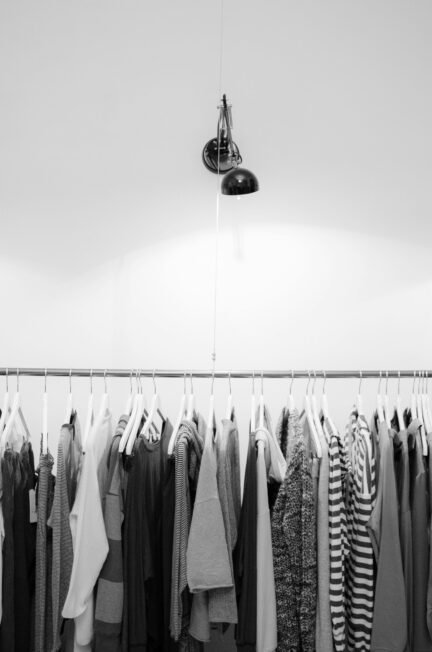Introduction
Streetwear fashion, once an underground subculture, now reigns as a global language that speaks to all ages, genders and geographies. Due to the rise of social media, the term streetwear has leaked its way into fashion areas around the world, referring to a mash-up of every possible style that originated from major urban cities starting in the late 20th century and later evolving into a multi-billion-dollar industry transcending clothes influencing high and everyday fashion alike. With their relaxed, understated and thrilling nature they not only have their origins in skateboarding, hip hop and surf culture but also have a great influence even until today on the design styles of the fashion world. Streetwear in 2018 is more than a way to dress; it’s how we convey what we believe, show our resistance and have become a cornerstone of new age pop culture.

But how did streetwear get so important? How has this once niche fashion movement become the top tastemaker in mainstream, luxury and even ‘fast’ fashion? From its roots to its current form, this post examines the evolution and landscape of streetwear fashion including why it has stood the test of time and where it fits into pop culture.
The Origins of Streetwear
Streetwear Streetwear fashion originated in the late 1970s to early 1980s from the United States, particularly in cities such as New York and Los Angeles. It was during these flourishing times of skateboarding, hip-hop, and surfing where the roots of streetwear were hewn. Brands like Stacy started by Shawn Stacy in 1980,were those that exploited this growing cultural movement the best. Stacy pioneered the use of graphic prints and logo placement, inspired by punk rock, surf culture, and skateboarding to fashion-conscious youth.
Meanwhile, in New York City, the rise of hip-hop culture was contributing to the formation of streetwear’s core identity. It was at this point that hip-hop Artists and graffiti writers started developing a brand of their own including oversized clothes, vibrant colors and signature sneakers. It caught on as an urban phenomenon, appealing to young people all over the city, and it wasn’t long before hip-hop and streetwear crossed paths.
Early streetwear was driven primarily by anti-fashion working-class culture-of-resistance mod-fashion movements : this factor among others was the most paramount to much of that early line. It had to do with showing individuality, defiance, and relation to the kind of subcultures seldom recognized in corporate world. Whether they were skateboard-kids sporting Stacy, or a rapper in Adidas tracksuits and gold chains, streetwear provided a means for people to communicate their identity their -membership card to the subcultural world.
The Evolution of Streetwear
Streetwear Began to Change with the 90s New brands and global subcultures contributed to making streetwear an international phenomenon. The prominent Supreme brand was established in 1994 in New York City by James Jerboa, which helped to further popularize the genre. Supreme started out as a skateboarding brand before growing into a coveted cultural status symbol for its exclusive drops and high-fashion collaborations.
Streetwear labels of that era also took on a DIY (do it yourself) attitude to creating many of the designs were made by the artists, musicians and creatives of the street. The scarcity of these limited-run items served to reinforce the idea that in order to be special and part of this exclusive streetwear brand ecosystem you needed to have a highly coveted Sheikh.
It was not until the late 1990s and early 2000s, however, that streetwear lived up to its name. Over in Japan, we saw the birth of brands like A Bathing Ape (BAPE) that fused streetwear with Japanese sensibilities and high fashion. BAPE founder, Ingo, became a seminal figure in streetwear history as playful designs and international artist collars caught the attention of the world. Also, the international impact of Japanese streetwear Kenzo building on work being done outside America and helped further solidify streetwear to become a respectable trend in fashion.
Streetwear Meets High Fashion
An essential point in streetwear came when luxury fashion jumped onto the style. During the 2000s, the amalgamation of streetwear and designer wear was a major craze with an abundance of brands showing off urban guides in their shows, including American fashion originators Marc Jacob and Alexander McQueenPAY6X.
The collision of streetwear and high fashion has never been greater in the modern era. Streetwear icons have been teamed up with brands such as Louis Vuitton, Gucci and Balenciaga. One of the biggest milestones was when Louis Vuitton came together with Supreme in 2017. The collaboration was a huge hit, merging Louis Vuitton’s luxury legacy with Supremes’ street cred and selling out in almost seconds. More importantly, streetwear and high fashion have married into one another forming a new landscape of forward-thinking men’s clothing where the ability to turn heads in a hoodie and jeans is just as powerful or more so than being suited up head-to-toe in black-tie attire.
However, the dawn of social media has been a driving force in pushing streetwear into the global limelight. Fashion influencers, celebrities and everyday consumers have become style-setters who are effectively able to show their streetwear styles using platforms like Instagram, Tikor.
The Culture of Collaboration
Streetwear is all about the collaboration. Streetwear brands have been working with other designers, artists, musicians as well as fellow brands for years to create exclusive and special pieces. It’s something that is as omnipresent in streetwear as tees and hoodies and it adds a level of excitement and exclusivity to the wider industry.
One of the most famous examples of this is Nike’s decades-long partnership with Michael Jordan to design a pair of sneakers known as the Air Jordan’s these are quite literally representative of how so-called streetwear has come to impact every corner of world culture. leading Anchor companies nowadays. These running shoes are not just for wearing, but also a fashionable item and symbol of success. For example, music artists such as Kanye West has partnered with brands like Adidas to create the Yeezy line that stands alone in pop culture.
Indeed, the desirability (attractiveness) over these is that most of them can combine disparate cultural realms. Streetwear brands working with Maison couture’s or any sought-after musician spinning on trends taps across multiple fan bases leading to a need and want for consumers. Exclusive collections sell out in seconds and the secondary market for streetwear has ballooned to an industry that does hundreds of millions in business, with some pieces trading hands for a five-figure sum.
The Future of Streetwear
With eyes to the future, it does seem that streetwear is here to stay. It is only probably going to continue evolving and affecting the fashion world based for quite a while. Sustainability is one field where streetwear is truly killing the game. In the day and age where fast fashion is becoming increasingly unsustainable, many streetwear brands are releasing eco-friendly capsules. While brands like Patagonia and Noah have set the precedent by integrating sustainability into their production, consumers.
One without end in sight, too: If for no different cause than its ability to evolve with new technologies and cultural inclinations, streetwear can never be canceled IRL. The streetwear scene is delving into virtual fashion, AR clothing and NFTs for fresh ways to reach their consumers. With streetwear, there is a very real opportunity to scale utilizing the digital environment in order to stay culturally relevant.
Conclusion
Streetwear fashion has evolved a lot from the streets of New York and Los Angeles. From its subcultural origins, streetwear has blossomed into a world-beating market and cultural movement, reshaping the fashion industry in its own image. With its signature mix of comfort, creativity and street-level relevance and that ineffable cool factor it became a bedroom slipper for millions worldwide. With streetwear continuing to grow, converge with high fashion, sustainability and digital tech it is clear that this cultural revolution remains far from over.



